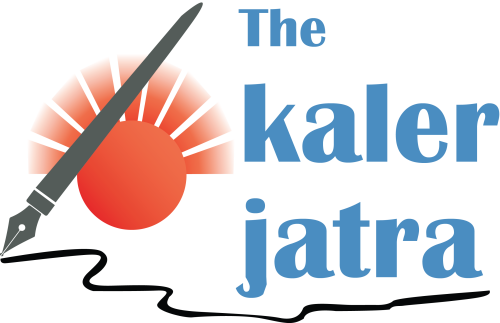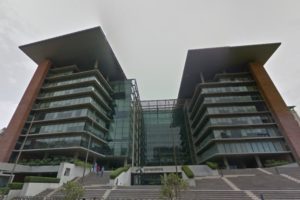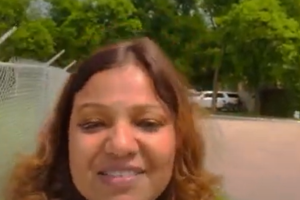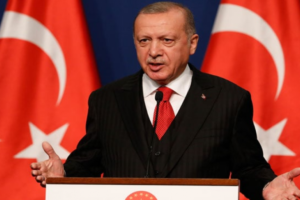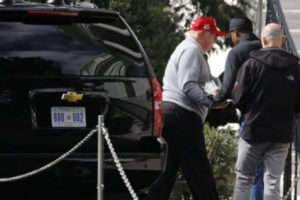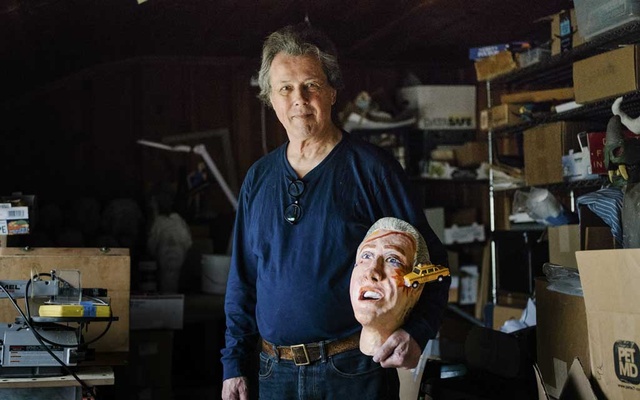Canadian law enforcement officials said Sunday that they had at last reopened a major international bridge that had been blockaded by protesters for almost a week, raising hopes for industries, especially auto manufacturing, that have been slowed to a near standstill by the unrest. But at the footstep of Parliament some 500 miles to the northeast, they appeared powerless to quell the near-chaos.
As officials announced that the Ambassador Bridge, which ties Windsor, Ontario, to Detroit, had been reclaimed after a series of arrests in the morning, some hailed it as a victory for a government deeply shaken by the intransigence of anti-vaccine mandate protests that began three weeks ago and have since mushroomed. But even as traffic began to crawl across just before midnight Sunday, it was a rare bit of good news for the government.
In Canada’s capital, Ottawa, hundreds of truckers were entering their third week of occupation of the area around Parliament Hill. They appeared to be emboldened by a growing sense of impunity, although late Sunday there were reports that an agreement had been broached for the drivers to pull out of some neighbourhoods over the coming days.
The mayor of Ottawa, Jim Watson, revealed back-channel negotiations with the truckers’ leadership to remove their convoy from residential neighbourhoods, among other measures. The mayor’s office released an emailed letter dated Saturday from one of the protest leaders, Tamara Lich, in which she said, “We will be working hard over the next 24 hours to get buy in from the truckers.”
The mayor said Sunday in an interview that the conversations began several days ago, with the only concession offered to the truckers being an agreement to meet.
The proposal would have the truckers leaving a residential area, where 15,000 people live, he said, but they would not be forced from Wellington Street, site of the legislative buildings.
“My preoccupation has been to give some relief to the people who live in these areas,” he said. “It’s not the politicians or the truckers themselves who are suffering, it’s the people who live in these communities.”
Word that tensions might ease a bit in the beleaguered capital came after protesters and their supporters spent the weekend jamming the streets with dance parties, bonfires and even an inflatable hot tub. People swarmed local stores without masks, violating local regulations, and lavished the truckers encamped in their vehicles with cash and gifts that they tossed through their windows.
The slim ranks of police officers strolling through the occupation appeared largely to be standing by as people openly violated myriad laws. Some flaunted jugs of diesel fuel — forbidden supplies for the truckers — who leaned on their truck horns.
In Windsor, a city on the edge of the Detroit River, at the southernmost heel of the province of Ontario, police took a more assertive stance.
Beginning Saturday morning, hundreds of officers staged a maneuver to rout the trucks that had been blocking the approaches to the Ambassador Bridge all week. Forming a human cordon, over the course of the day police forced trucks off and pushed back protesters whose blockade of the major international trade route had cost American automakers, in particular, millions of dollars.
Late Sunday morning, police said the remaining protesters had been largely cleared, with some arrested.
“Today, our national economic crisis at the Ambassador Bridge came to an end,” the mayor of Windsor, Drew Dilkens, declared.
In the hours after that announcement Sunday morning, it was unclear whether his words might be more hopeful than warranted, given the scene at the bridge: Protesters were mostly gone — at least, for the moment — but all day Sunday the span remained idle.
Late Sunday, the bridge was officially reopened, according to the Canada Border Services Agency, after being plowed and salted, two days after the operation to drive back the protesters began.
“I know you guys are just doing your jobs, but you’re working for the wrong side,” one protester yelled at officers late Sunday evening as he left the busy intersection where the demonstrators had gathered about a half-mile from the foot of the Ambassador Bridge.
Authorities said the protesters had been repeatedly warned that they faced arrest. “Canada is a nation that believes in the right to freedom of speech and expression,” Dilkens said, “but we are also bound by the rule of law.”
The action of the police at the bridge contrasted sharply with their counterparts’ response in Ottawa, where hundreds of truckers have spent the past 18 days occupying the streets of Parliament Hill. Virtually unchecked by the police, they have cut off access to buildings that house the country’s Parliament, Supreme Court and even the prime minister’s office, their rumbling semis adding a brooding presence to the ordinarily placid city.
In recent days, the stage had seemingly been set for the police to act to end the trucker encampment. On Friday, Ontario’s premier, Doug Ford, declared a state of emergency, clearing the way for police to arrest occupiers and impose steep fines.
Other potential penalties piled up.
Truckers were threatened with the revocation of their licenses. And anyone aiding them, Ford warned, such as by supplying fuel, could also be arrested. Last week, a judge issued an injunction banning the cacophony of blasting horns that has been the occupation’s trademark day and night, acting after a resident filed suit on behalf of her neighbours.
Prime Minister Justin Trudeau, too, had also been hinting at a more forceful response after weeks of restraint in which he appeared to be trying to maintain a tenuous political balance. Late Sunday, Trudeau said that the government had held a meeting that “covered further actions the government can take to help end the blockades and occupations.”
Trudeau heads an unpopular minority government, and his reticence appeared to be an attempt to avoid turning the protests into a referendum on his leadership, which has the approval of only 42% of Canadians, and on pandemic policies that have polarised voters.
But if there is another shoe, it has yet to drop in Ottawa. Over the weekend, the protest only swelled, infusing the famously staid city with an air of anarchy for the third consecutive weekend.
“We are exercising our rights to peacefully protest; that’s why the police haven’t come down and raided us,” said Guy Meister, a trucker from Aylesford, Nova Scotia, who said he had spent nearly three weeks in his truck, parked across from the Senate building. “As far as illegal, they have to show me what’s illegal. How come I haven’t gotten a ticket yet? How come I am not in jail after three weeks?”
Meister offered an answer to his own question: “Deep down they know, yes, they can arrest us — but it’s a mistake.”
Police say that they are hamstrung by a lack of resources and that they are badly outnumbered. The Royal Canadian Mounted Police and the Ontario Provincial Police opened a new command center Saturday evening.
But the call a week ago by Ottawa’s police chief, Peter Sloly, for 1,800 more officers to bolster the city’s current rank of 1,200 appears to have so far gone largely unanswered: The force has received only about 250 mounted police officers, he said Thursday. Police did not respond to a request Sunday for updated numbers.
From the protest’s start through Saturday, police had made 26 arrests and doled out 2,600 tickets. There are 140 criminal investigations underway, police said.
The mayor said that when municipal officers had tried to issue tickets, they had at times been swarmed by protesters and needed a police escort, which the city lacks the staff to provide.
Even with their resources limited, critics say, the police could be doing much more.
“We got them the additional help, but we really need them to enforce the law and uphold the law,” Bill Blair, minister of emergency preparedness, told the Canadian Broadcasting Corp. on Sunday. “Ultimately, this is the responsibility of the police — to enforce and uphold our laws — and we just need them to do it.”
In fact, in some respects the biggest concrete resistance the occupiers have faced to date has come not from law enforcement but from ordinary citizens who over the weekend organized a counterprotest, getting out the word over Facebook pages normally concerned with dog-walking and barbecues.
They begged the truckers to go home.
“It feels like a bad dream that has lasted for two weeks,” said Suzanne Charest, 58, one of the marchers.
On Sunday, some returned for a second counterprotest in which they formed a human blockade to try to turn back a convoy of truck drivers intent on making an incursion into the city’s downtown core.
With few exceptions, “all levels of government,” she lamented, “have really abandoned the people of Ottawa.”
The unrest was not limited to Ottawa and Windsor, though.
Other protests were continuing in at least a dozen Canadian cities, drawing crowds of varying sizes. As of 5 pm Sunday, the Canada Border Services Agency reported that the border crossings remained closed at Emerson in the province of Manitoba, north of North Dakota, and at Coutts, where the province of Alberta borders Montana. At the Pacific Highway crossing between Washington state and Surrey, British Columbia, the border remained closed as of Sunday evening.
